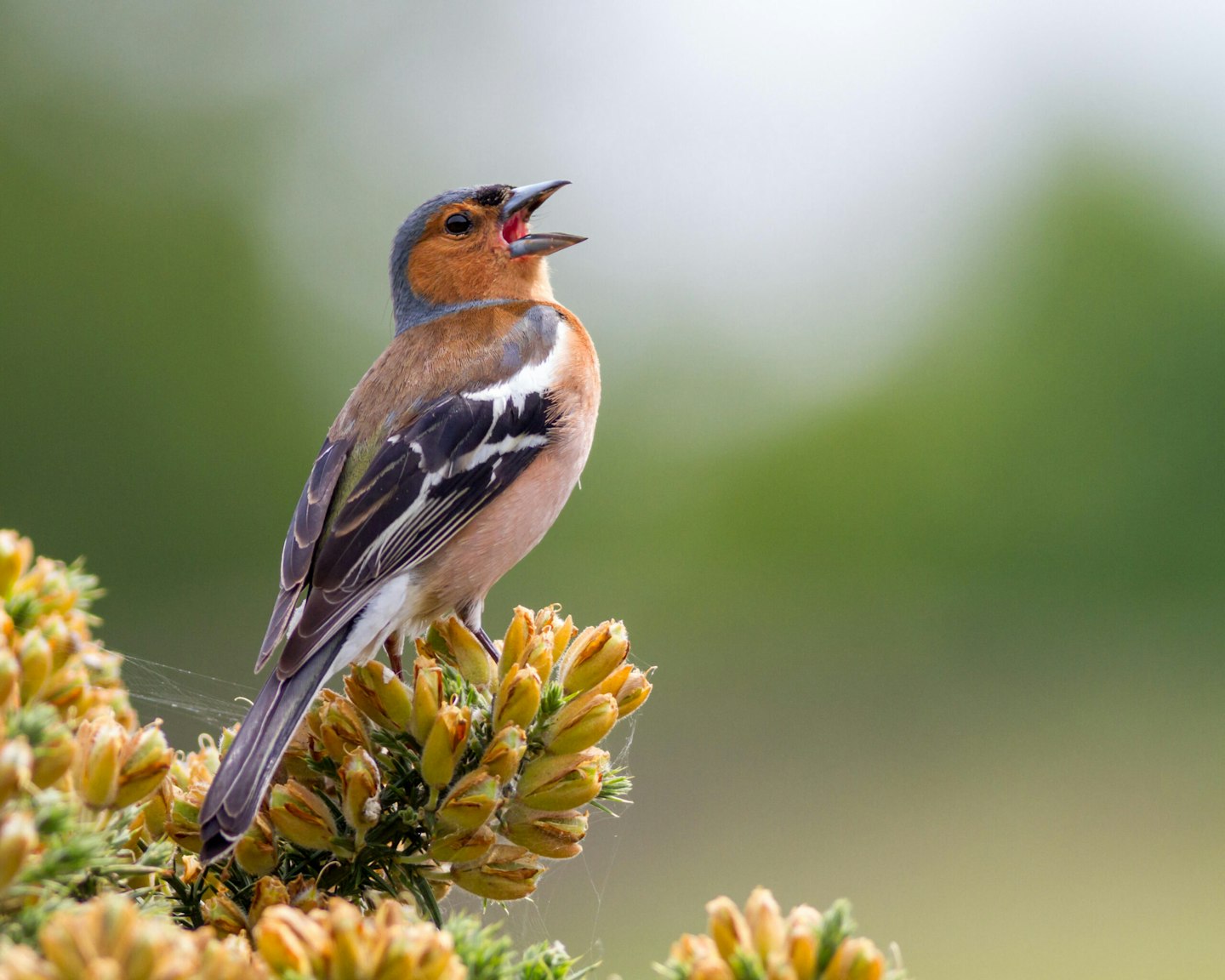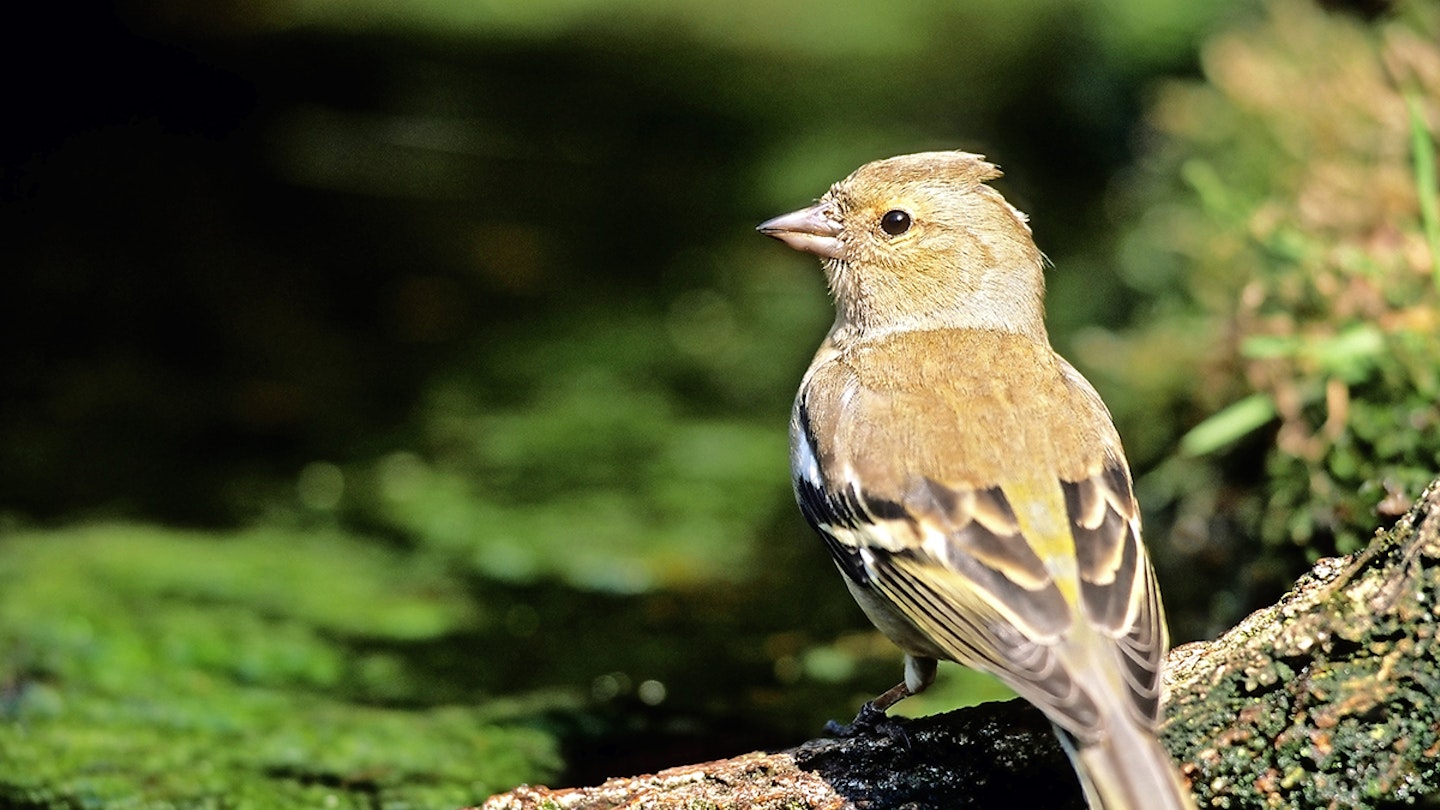Research has revealed that there’s a lot to tell about this bird just by its song
Scientific name: Fringilla coelebs
Length: 15.5cm
Wingspan: 24.5-28.5
UK numbers: 6.2 million UK breeding/2 million in Ireland
Habitat: Everywhere
Diet: Insects and seeds
Here’s a confession: for years, I have harboured a pinch of salt. It used to arise when people would say, for example: “I have a lovely Robin in my garden. I can recognise him because he is tamer than others and he sings to me.” Or they might say: “My garden Blackbird was especially cheerful today.” And while I might smile or nod, the sceptic in me would use the salt to dissolve the fluffy stuff into scientific fact. Assigning clearly human thoughts and feelings to birds verges into the dangerous territory of anthropomorphism.
But in recent years, the climate has changed, and one of the subjects that is in vogue in scientific circles is the notion of personality. More and more studies on different animals – even fish and amphibians – are targeting how personality might affect an animal’s behaviour. And one of the earliest studies on birds concerned a species we all know well, the Chaffinch.
The researchers caught some wild birds under licence and kept them individually in cages for a couple of weeks. During this time, they would regularly test their charges’ reactions to a simulated predator attack. A bird would be placed in a cage and given plenteous seed to eat; here its level of activity, based on how often it moved around and investigated its surroundings, was measured, to gain an idea of how active it was.
Then, a taxidermist’s stuffed Sparrowhawk would be placed on a pulley system so that it flew over to the side of the cage, and the bird’s reaction to the ‘attack’ would be videoed and assessed. It turned out that individuals that were measured on the ‘hyperactive’ scale were less likely to freeze and more likely to flee, whereas ‘hypoactive’ individuals would be more cautious, immediately adopting a freeze position. Interestingly, the hypoactive Chaffinches took longer to return to feed than their hyperactive peers, staying longer in latency, often for five minutes or more.
And remarkably, the researchers found that, when subjected to the same simulated attack repeatedly, individuals reacted the same way each time, strongly suggesting that their behaviour was consistent, and was therefore part of their ‘personality.’
The reaction to a predator attack is only one outworking of a personality trait that stretches along an axis with ‘proactive’ at one end and ‘reactive’ at the other. Birds at the proactive end are more exploratory and bolder, often better foragers and dominant in social situations. Fascinatingly, they have been recorded dispersing further, too. Reactive birds keep safer, so one would assume that they are better survivors. These tendencies are thought to be inherited and are fixed, just like a human personality, and it seems that they have profound implications.
This might well make you look at birds differently, for example at a bird table. And it might make you review some of your experiences. When I was young, I would go to my local park and attempt to feed the birds by hand. Some individual birds would always be bolder than others. Intuitively, they seemed to have a different personality. Now we know that they do.
Paranoid birds?
It is a fascinating thought to wonder just how far into other aspects of personality bird differences might go. Those around in the 1980s might remember the wonderfully droll thought in The Hitchhiker’s Guide to the Galaxy of creating machines with inbuilt human personalities, such as Marvin the Paranoid Android. Could birds be paranoid, or cheerful (as in the garden Blackbird, above), or vindictive, or cynical, or more gregarious than others? It’s a delicious notion.
The findings on personality are part of a bigger research picture that has moved towards seeing the individuality in animals. Where once we would study a species, now we study individuals, and how birds that look the same to us visually and physically differ in the most subtle and delightful of ways. Another reminder that birds are individuals comes from another biological process, that of singing.
At the moment, all around the woods and gardens of Britain, Chaffinches are singing their songs. Their simple phrase is a delight, cheerful and breezy, and easy for us to remember. The fact that a male might sing its phrase six times a minute means that we can pick it up easily.
The many studies on Chaffinch song show, above all, that a male’s song is his and his alone (in common with the case in most small birds, the females don’t normally sing). If you were to record a song and analyse it, there would be individual blueprints everywhere. Most Chaffinches have several, slightly different songs – up to half a dozen – and they commonly sing one phrase for several minutes before switching to another song type. So, each individual male has a repertoire that is uniquely his, a mix of unique song-types and song-types copied from other birds.
The way in which Chaffinches learn their songs is key to two things. Firstly, the male must sing a song that is recognisably that of a Chaffinch, because if he doesn’t, he won’t be able to communicate an effective message either to rival males or potentially interested females. However, the learning system must also allow for enough variety for songs to develop.
A wealth of research has revealed that all Chaffinches are born with the ability to sing the bare bones of their song, the template for the species (which varies little throughout the bird’s range.) Even individuals hand-reared in isolation from other Chaffinches have this, producing a curious rattling that you could just about imagine will turn into the recognisable phrase. The rest, however, appears to be learnt during the youngster’s first year.

Jamming by itself...
The first songs an individual will hear will be from the father and his neighbours. Each youngster evidently listens to them, possibly beginning while still in the nest, and memorises them. Then, early the following spring, the same male starts practising what it heard, somewhat under the breath but still audible, even to us – jamming by itself, you might say.
These early season plastic songs of late January and February are just that, malleable and moveable, and with more practice and, presumably, invention and imagination, the male eventually produces its own repertoire, subtly different from anybody else’s. It is a wonderful thought that such a long and elegant process gives rise to the songs that we are hearing now (although the process may be quite different for other bird species.)
What it does mean, however, is that a male Chaffinch’s song is an individual characteristic. So, here’s the question: could a Chaffinch song also be a reflection of a male’s personality? Could the song be an expression of something more than its physical makeup, more than its health, something of its character instead?
If a bird is more inventive than its neighbours in its repertoire, could that tell a listener something that transcends the basic information a colleague needs? For example, if a bird is inventive in singing, might it be equally inventive when it comes to foraging? Might hypoactive birds be more creative?
Next time you hear a Chaffinch singing, you might just conclude this it is indeed more cheerful than its peers.
Key reference: Quinn, J.L., and Cresswell, W.
Personality, anti-predation behaviour and behavioural plasticity in the chaffinch Fringilla coelebs (Article)
Behaviour, Volume 142, Issue 9, September 2005, Pages 1377-1402
Where to see them
Look for them around the UK in woodland, hedgerows, gardens, field and parks.
